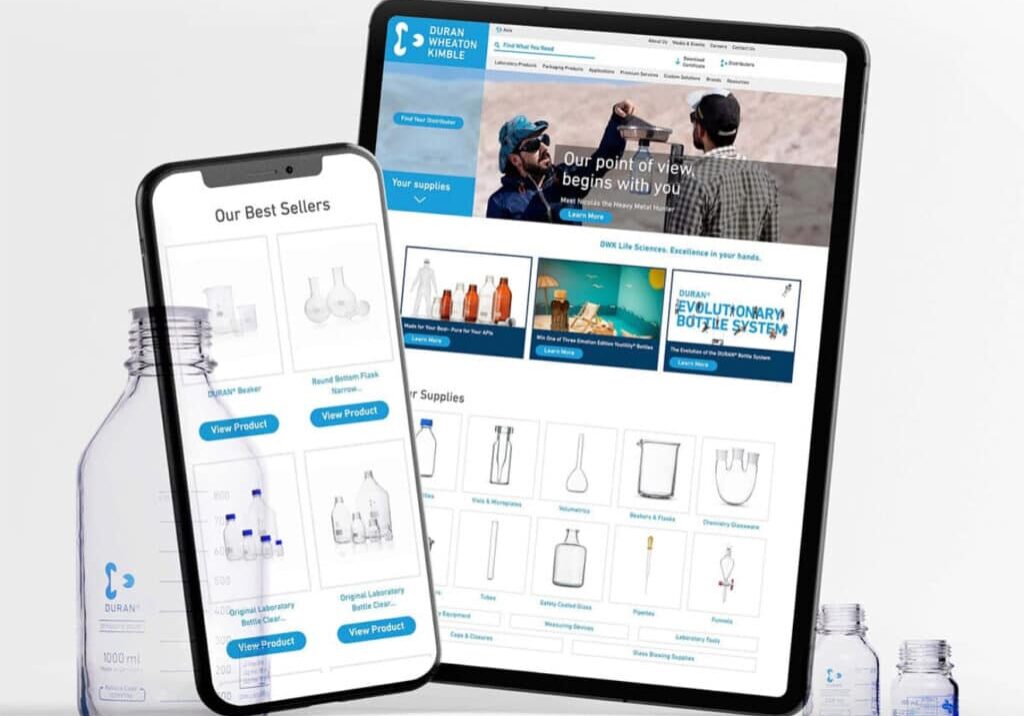Web Development, Website Design & UX
3 Minutes
Constructing Buildings vs. Websites
Dear Life Science Marketer,
I recently came across the idea of website physiology, or website form and function and the process that building one takes.
As a web designer and digital strategist, I’m always learning and incorporating successful elements from other industries into our own process.
During my stay in Chicago last weekend, I went on a beautiful architecture tour chicago architecture tour from the riveron the river through downtown.
Our guide walked us through all the different types of buildings and schools of architecture. There are buildings that range from Gothic to modernist and everything in between.
Gothic architecture can best be seen in beautiful examples like the Notre Dame cathedral in Paris.
Then we saw some buildings of the modernist school of thought.


Modernism is the single most important new style or philosophy of architecture and design of the 20th century, associated with an analytical approach to the function of buildings, a strictly rational use of (often new) materials, an openness to structural innovation, and the elimination of ornament.
In other words, “form fits function.”
And then it clicked for me.
Web design is extremely similar to constructing buildings.
There was a time when websites were flash- and video-heavy, rich with animations and other distracting features.
Today, the best websites are of the “modernist” approach: clean, simple designs without any extraneous features that do not support the user’s experience of the website.
Can you imagine asking an architect to draw you a design of a building without first understanding the purpose of the building, who is residing in it, where it is located, and more?

Building and designing a website is the exact same concept.
- The questions we ask aren’t so different either.
- What is the goal of the website?
- Who is your target audience?
- What is the problem that you’re solving?
- How many visitors will come onto the website?
But then, there’s a whole other level of strategic insight that digital architects like my team and I have to consider: search engine optimization.
If you are building a Whole Foods, you are probably looking at affluent neighborhoods off a busy intersection or road. This helps you “be seen” and get a lot of visitors due to your location.
If you are building a new website that sells antibodies, you need to research key phrases that people look up and then optimize your site to get more traffic from high-volume keywords that your target audience is looking for.
So, how do you approach SEO when it comes to building a new website? A few simple steps:
- Create a site architecture in parallel with keyphrase research. Each page on your website should target a max of one specific keyphrase.
- Build or plan out new content for pages that don’t currently exist.
- Conduct an audit of what pages are already ranking for which keywords and ensure that those pages remain or the content is somewhere else on a new page. SEMrush is a great tool to see what traffic you’re currently getting to your website (and also competitors!).
- Create healthy amounts of keyword-rich content with 300-500 words per page that utilizes the keyphrase 3-5 times.
- Redirect all old pages to the correct new pages using 301 permanent re-directions. This will help you to pass over rankings to the new site and prevent a massive drop in traffic.
- Update all meta-tag elements, especially title tags and meta descriptions, as well as image alt tags.
- Launch and request a re-indexing in Google’s search console.
If you follow these basic steps, you should be on the right track.
Make sure that you absolutely do not skip over step #3 which is one of the most important — and most often overlooked — steps for a website that is already receiving traffic.
There’s nothing worse than launching a new website only to learn that you lost half of all the traffic that you initially had.
If you want to get the full comprehensive SEO checklist specifically for life science companies, you can find it here: https://info.supremeopti.com/seo-ebook/.
So, what’s next?
SEO is important in helping you generate new traffic to your site, but once on the website, it is the job of your design, content, and structure to help convert visitors into qualified leads.
When you think of your next website project, think of it like you’re building a digital home.
Before design or construction begins, research and strategy come first.
Until next time…
Sheldon
Related Posts
Get a Quote or Ask a Question
- Curious about our process or pricing?
- Need help getting buy-in?
Contact us right away — we’d love to help.
Let’s take a look at your website together and figure out your best options for business growth.

Contact us right away — we’d love to help.
Let’s take a look at your website together and figure out your best options for business growth.



